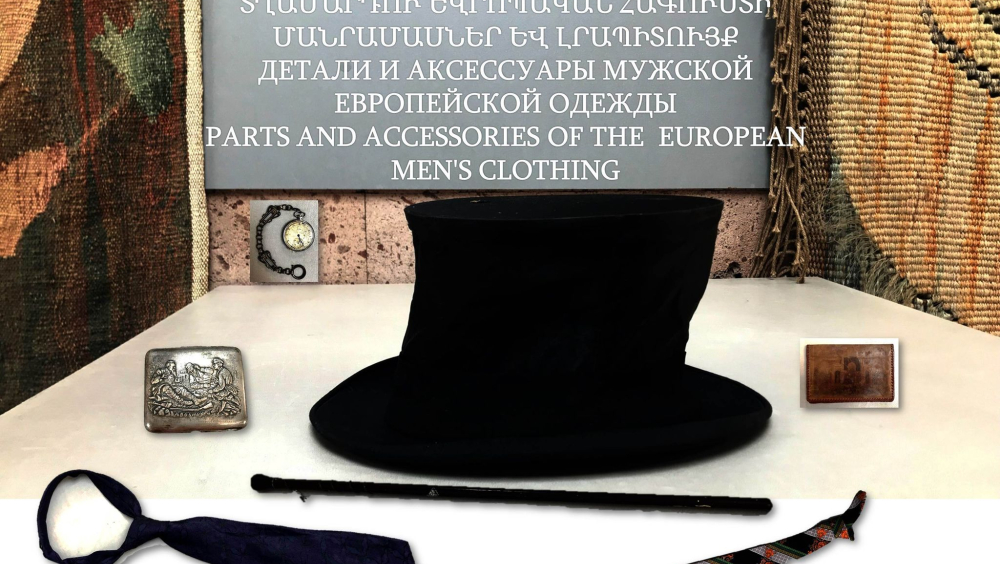ACCESSORIES FOR MEN,S EUROPEAN CLOTHING. TEMPORARY EXHIBITION
In the traditional society of the early 19th and 20th centuries, the complex of men's national costume, being more changeable unlike women's costume, lost its ethnic features relatively early. Men's national costume was an open and receptive complex in the field of interethnic relations and borrowings, which was the result of relatively free social, economic and marital status of men. In the late 19th century, remarkable changes were made in the clothing of Armenian men living in urban environment. Representatives of the elite, youth and intelligentsia were more receptive to innovations and European fashion. Gradually, complexes of European clothing with certain accessories became popular. Nowadays, at least until the last decades of the early 21st century, men's clothing changed relatively slowly.
The current exhibition is dedicated to ethnographic artefacts of European men's clothing and accessories, which are stored in the Museum of Armenian Ethnography. In the late 19th - early 20th centuries, both Western Armenian and Eastern Armenian men’s costume became noticeably influenced by the European clothing. The exhibited complexes are dedicated to demonstrating this trend and its dynamics. The exhibition is held in a hall with European interior. Ties, dating back to the 1960s and 1980s are exhibited. Most of them are donated to the museum by the founding Director, Doctor of Historical Sciences, Professor Lavrenty Barseghyan on his birthday - January 7, 1980s. The outstanding museologist noted the significance of further historical-cultural value of this collection both in terms of replenishing the collection and presenting the people who mastered the fine skill of wearing a tie. Ties of different colors and fabrics, which eventually became an obligatory accessory of the clothes of statesmen and officials are exhibited. A tie made in Paris stands out among them. Ties of different shades, necessarily adapted to the suit of the owner, are also exhibited. Men wore ties mainly in the 1960s and 1980s. To this day, men mostly wear ties at official ceremonies, festive celebrations. Some notable items are also exhibited: a wide-brimmed top hat, a straw hat that has been popular since the beginning of the 20th century. Along with clothing, accessories that complete the image of a man are also exhibited: wallets, rings, tobacco-cases and a remarkable set of shaving accessories produced in Western Europe in 1904, which speaks of a new men's means of care. To make the dynamics of ties and other clothing elements obvious, we also exhibited examples of new ties, trousers and belts. Boys used to wear ribbons and ties in kindergarten or at an early school age, which made their image special. During the exhibition, it became clear that today few people have retained the skills of tying a tie, and in a staff of 100 people, only one man had mastered the art…
In my opinion Europian heritage is connected with values on human common rights, friendship and democracy. Europian culture has intagrative potencial and make people more free, kind and polite.
